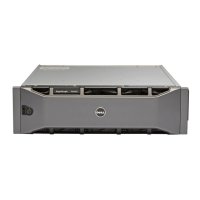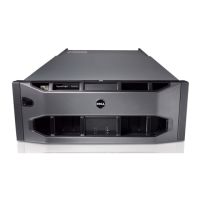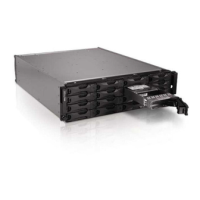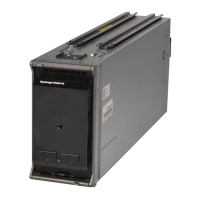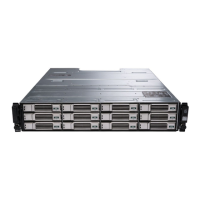Dell EqualLogic Configuration Guide v11.3
2.4 RAID Policies
Each array in an EqualLogic array group is configured with a single RAID policy. Arrays (or group
members) within the same storage pool that have the same RAID policy will cooperatively work to host
volumes by distributing those volumes over multiple arrays. Two things defined the RAID policy:
RAID level
hot-spare configuration
Each array implements a default RAID policy that includes a hot-spare. To configure a RAID policy that
does not include a hot-spare you must manually initialize the array using the Command Line Interface.
2.4.1 RAID 5
RAID 5 (striped disks with distributed parity) will combine N disks in an arrangement where each stripe
consists of N-1 disks that contain data blocks plus 1 disk that contains a parity block. For each stripe,
the parity block will be placed on a different disk ensuring that the parity blocks are not located on a
single disk in the RAID set. RAID 5 implementations can tolerate a single drive failure without data
loss.
For EqualLogic arrays using a RAID 5 policy, Table 5 shows the drive layouts that are enforced based on
the number of drives in each array and the hot spare configuration.
6 Data/Parity
1 Hot-spare
RAID Policy for RAID 5
without a hot spare is not
supported
7 Data/Parity
1 Hot-spare
13 Data/Parity
1 Hot-spare
15 Data/Parity
1 Hot-spare
46 Data/Parity
2 Hot-spares
(a) 48 drive arrays implement multiple RAID 5 sets within a chassis
Table 5: RAID 5 Drive Layouts
For EqualLogic arrays using a RAID 5 policy, the total quantity of raw storage available can be
computed based on number of drives and the hot spare configuration. The Table 6 below shows the
amount of raw storage available using the hot spare drive layouts specified in Table 5 above.
Note: Configuring a RAID policy that does not include a hot-spare will increase the risk
potential for data loss in the event of multiple drive failure.

